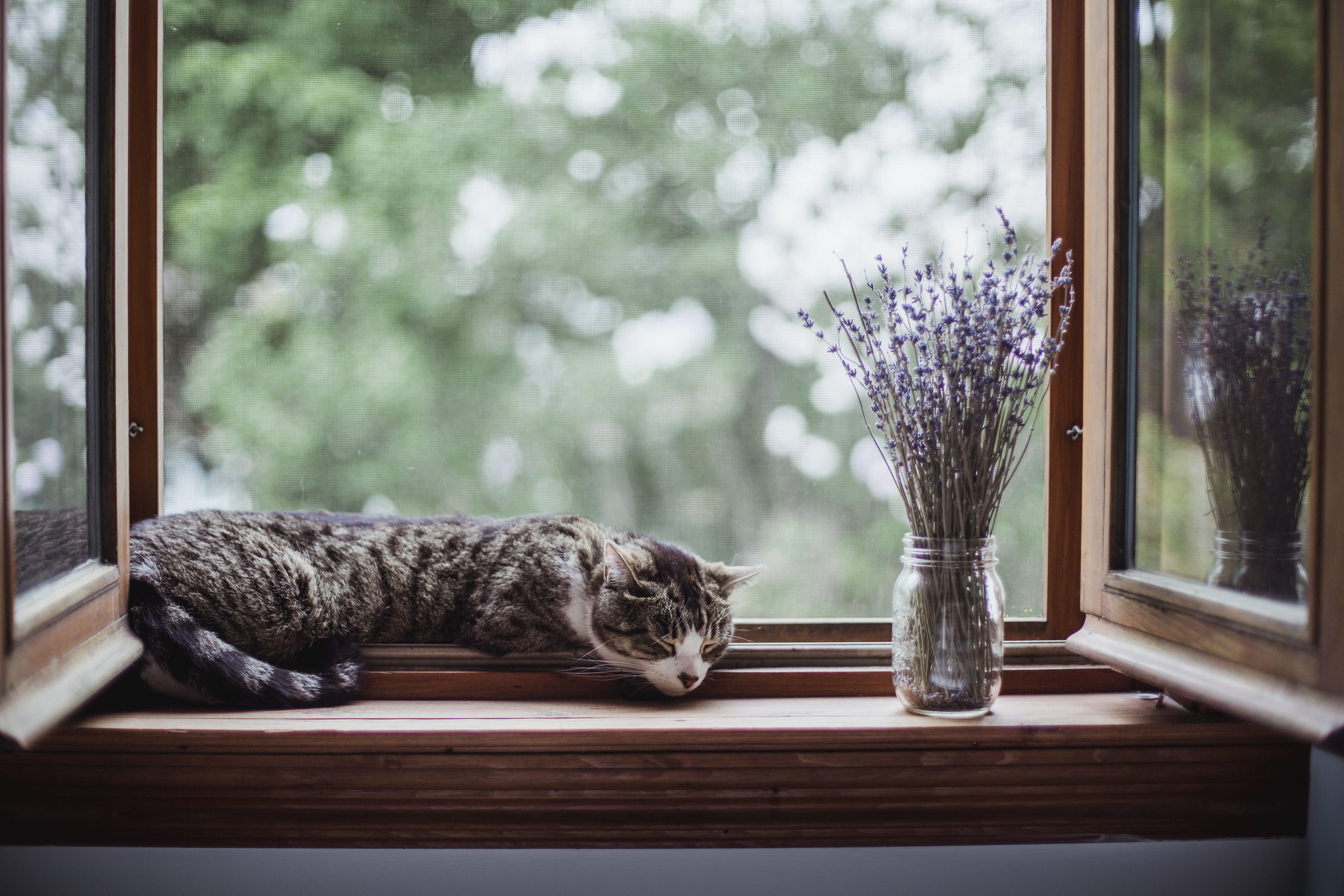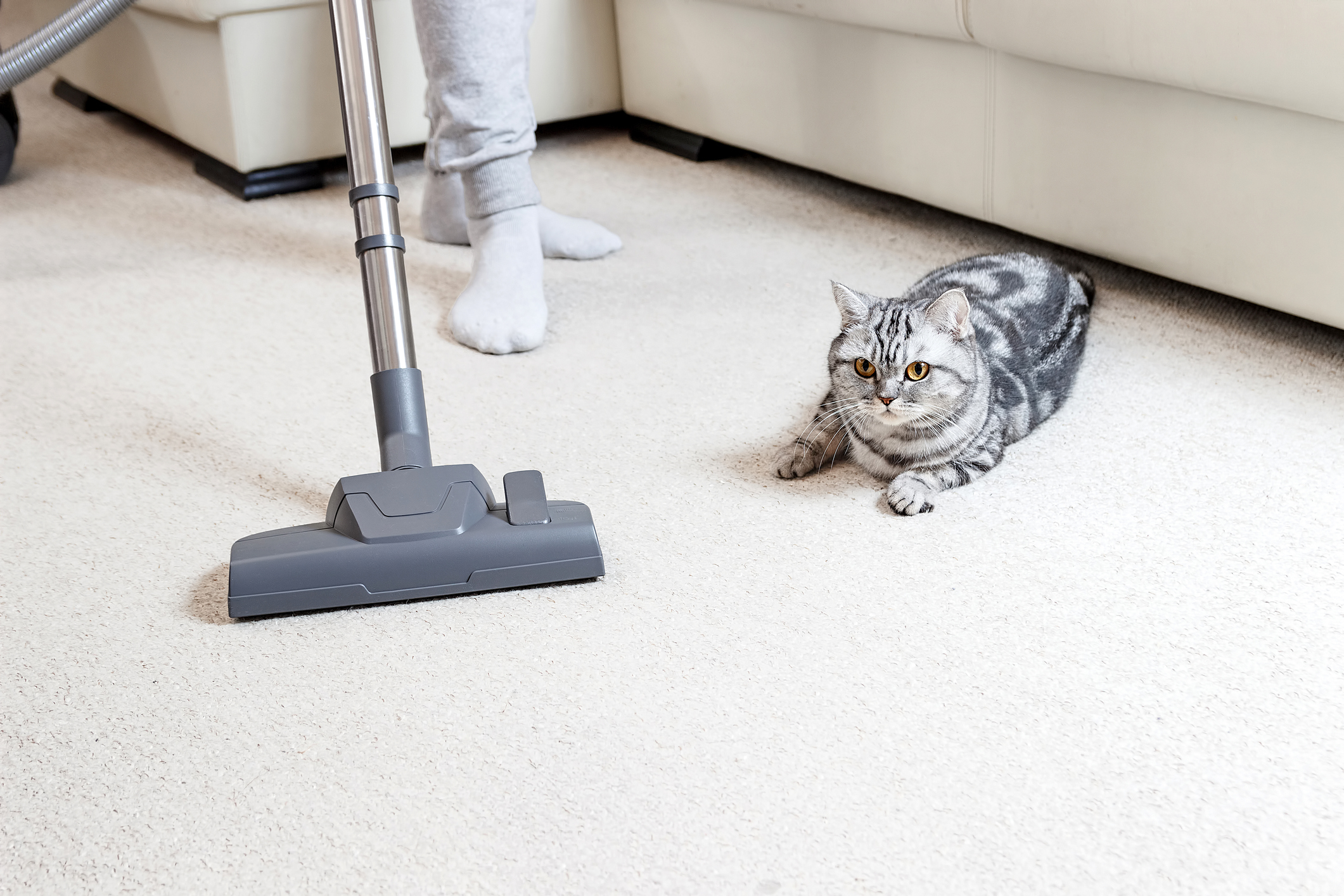
Indoor Cats Can Still Suffer from Allergies!
When spring and summer roll around, people with allergies know to stock up on antihistamine and allergy relief products for when they head outside and face pollen, ragweed and other allergens. But while you know to prepare for outdoor allergens, you may forget that your furry friends might be affected, too.
Many pet owners think that seasonal allergies only affect pets that go outside and have direct contact with grass, pollen and other substances. Although allergies are certainly more common in pets that are rolling around in the grass, they can still affect pets that stay indoors. If your indoor cat suddenly begins to itch, sneeze, cough or wheeze, take note that it could be allergies.
How can allergies affect indoor cats?
You might think your feline friend is safe from experiencing seasonal allergies because they don’t go outside and stroll among the airborne allergens. However, this isn’t always the case. Numerous things can expose your cat to outside allergens and cause a reaction right around the start of spring and summer.
One of the most common reasons is allergens blowing through open windows and doors at the turn of the seasons. When the weather is nice, it’s normal to want a gentle breeze to pass through your home. Unfortunately, those breezes can pull pollen, mold particles and other airborne allergens inside where your cat is resting.
Another possible cause of allergies in your indoor cat is from you tracking allergens inside on your shoes or clothes. If you walk in the grass, then leave your shoes on and walk through the house, your cat could come in contact with those allergens and begin suffering from dreadful allergy symptoms.
Finally, if you have the air conditioning on, it’s possible that your heating and cooling system might be trapping airborne allergens and circulating them through your home. This is also common in winter—a time when mold and dust can lead to sneezing, coughing and itching among cats. If you haven’t changed your air filter or cleaned out your ducts, lurking allergens might be the culprits behind your cat’s discomfort.

Spotting seasonal allergies in cats
Cats can experience seasonal allergies in several ways. First, seasonal allergies can lead to a problem called atopic dermatitis, where the skin becomes red, bumpy and inflamed. Your cat will likely start to itch, lick or bite nonstop as a way to soothe the itchy feelings. Atopic dermatitis can be dangerous because it can lead to hair loss, open wounds and skin infections.
Respiratory symptoms are also possible in cats with seasonal allergies. Your cat might develop red, watery eyes and a runny nose, followed by sneezing, coughing and wheezing. Respiratory illness due to allergies can range from minor to very serious. In severe cases, these symptoms can make it difficult for a cat to breathe properly. Proper treatment is essential, even if your cat’s respiratory symptoms appear harmless.
How to put a stop to indoor seasonal allergies
Cats can have an allergic reaction when they inhale or come into contact with a substance their body has mistakenly identified as dangerous. Thus, the easiest way to give your cat some relief is to limit their exposure to allergens. You won’t be able to entirely eliminate airborne allergens from your home. However, it’s still possible to reduce allergens and your cat’s symptoms.
Try keeping your windows closed if your cat is displaying respiratory symptoms like sneezing, coughing or watery eyes. They might be inhaling allergens coming in through the windows. While that summer breeze feels nice to you, it could be causing your cat significant discomfort. Find alternative ways to move air through the home, such as turning on the air conditioner or setting up fans in rooms you use the most.
Additionally, try keeping a high-efficiency particulate air (HEPA) filter in the room your cat hangs out in most often. HEPA filters are designed to remove almost all foreign particles from the air. This can help filter allergens out and give your cat an easier time breathing. HEPA filters improve the air quality in general, which is beneficial for the entire family.
To avoid tracking in pollen, grass and other allergens, take your shoes off right after you enter the home. Avoid shaking out things like jackets or umbrellas inside. Additionally, frequent laundry, vacuuming and other cleaning can help remove allergen particles from around your home and limit your cat’s exposure.
Even the most stringent prevention measures might not be enough, though. If your cat’s symptoms persist, speak with your vet about allergy testing and treatment options. Allergy supplements might be all your cat needs if they display just a few minor symptoms. These organic, all-natural supplements can help regulate an overactive immune system.
Cats with asthma or severe allergic reactions might require a more robust treatment plan. Your vet may prescribe corticosteroids, a type of medication that reduces inflammation in the lung tissue. Corticosteroids often go hand-in-hand with bronchodilators, which vets use to open up the airways. These medications can be ingested, inhaled or injected and must be given on a daily basis to minimize serious allergy symptoms.

Be mindful of other allergy types
Of course, seasonal allergies aren’t the only types of allergies cats can experience. If your cat’s symptoms began before the turn of the season and persist well beyond spring or summer, they might actually be allergic to something you’re using in your home, such as perfume or cleaning products. An allergy test at the vet can help you identify the offending allergens.
If your cat is experiencing itchiness alongside vomiting or diarrhea, the culprit may actually be their food—not seasonal allergies. Pay close attention to their symptoms, especially if you try seasonal allergy prevention methods and see no improvement.
Your cat shouldn’t have to suffer every spring. While there’s no cure for allergies, there are many things you can do to alleviate your cat’s allergy symptoms. By monitoring their health and reducing their exposure to outdoor (or indoor) allergens, you can keep your feline friend calm, comfortable and happy.
Editor’s note: This blog was originally published in July 2020. It has been updated to include more relevant and comprehensive information.


